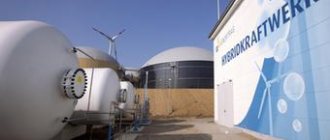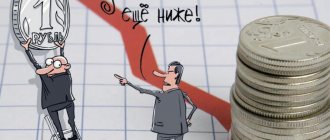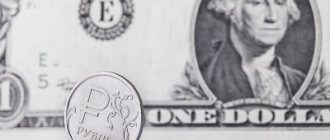The oil market ended 2021 quite optimistically. Oil prices will rise in 2021. World quotations of “black gold” in December for the first time in two and a half years reached $66 per barrel of Brent, overcoming the shock drop of 2014-2015. At the same time, experts still differ quite greatly in their forecasts for 2021, indicating a range of oil prices from 50 to 70 dollars per barrel.
The price of oil this year will mainly be determined by the relationship between supply and demand. According to Bloomberg experts, the prospects for the production of “black gold” in the United States are brought to the fore, and not mined in the traditional way, but by extracting hydrocarbons from shale deposits.
Reasons why oil prices will rise
OPEC and a number of non-member countries at the end of 2021 agreed to reduce oil production from the level of October of the same year by a total of 1.8 million barrels per day, of which 300 thousand are from Russia.
The agreement was concluded until the end of 2021. The parties to the agreement still do not rule out revising its parameters in June of this year.
In November, on the eve of the extension of the OPEC+ deal, quotes rose to $60 for the first time since July 2015, and at the end of December, oil surpassed the $66 mark after an oil pipeline explosion in Libya.
Analysis of the International Financial Center
Gaidar Hasanov, an expert at the International Financial Center, believes that in October the oil price will freeze at $61-62 per barrel. According to the analyst, the increase in value is due to US sanctions. Oil traders from the Asian region are hastily canceling agreements with tanker companies to avoid being caught up in sanctions.
Gaidar Hasanov, expert at the International Financial Center
Hasanov draws attention to the fact that it is now extremely important to monitor how relations between China and the United States will change due to American sanctions against Iran, since the PRC purchased a large volume of black gold from the Iranians. In light of the fact that negotiations between the two superpowers are already quite tense, a conflict in the Middle East could greatly complicate everything, and this will cause a new wave of chaos in the oil market.
Under what scenarios may oil prices not rise in 2021?
OPEC production records will depend on the price situation. There is a possibility that the cost situation will be in favor of American companies.
In 2014, when a barrel of oil was valued at almost $115, the cost of production in shale fields reached $85. Then prices dropped and US shale oil producers had to cut costs and introduce new technologies.
As a result, we managed to reduce the cost to $23. This is quite comparable to traditional ones. In Saudi Arabia, the cost of producing a barrel is $9, and in Russia it is about $20-25.
If oil prices remain at $60 per barrel in 2021, the cost of production of “black gold” will remain the same, which will give market traders reason to focus on a lower price - an average of $50 per barrel.
“A possible fall in oil prices is a serious threat. The United States is increasing shale oil and gas production. They will try to realize this strategic advantage in the new year,” notes Pavel Danilin, General Director of the Center for Political Analysis.
“We won’t see $80 per barrel”: where will the oil “swing” swing?
The price of a barrel of Brent oil on Monday morning reached $60 for the first time since the beginning of the COVID-19 pandemic, and this morning the barrel was trading at $61.35 Photo: president.tatarstan.ru
New economic cycle or flight from inflation?
The price of a barrel of Brent oil on Monday morning reached $60 for the first time since the start of the COVID-19 pandemic, and this morning a barrel was trading at $61.35.
Against this background, the domestic currency has strengthened slightly - today the dollar is worth 74.14 rubles, and stock trading in the Russian Federation, like yesterday, opened in the “green zone”. The last time Brent was above $60 was in January 2021. At the same time, the world economy is far from the level of January 2020, and there are no prospects for its rapid recovery. Among the reasons for the rise in oil prices is the extension of production cuts by OPEC+ members for February and March. In addition, Saudi Arabia has committed to a voluntary additional reduction of 1 million barrels per day to the January level. “We are doing this voluntarily and we are not asking anyone else to do the same,” Energy Minister Abdul Aziz bin Salman at a meeting of countries participating in the agreement in January.
The next factor is a decrease in new cases of coronavirus infection coupled with an increase in vaccination of the population. Analysts also note the role of US President Joe Biden to stimulate the country’s economy by $1.9 trillion. In an interview with CNN last Sunday, US Treasury Secretary Janet Yellen said that thanks to this package, the US could return to full employment next year (there are now 9 million more people unemployed in America than at the beginning of last year). In addition, on the same Sunday, Biden announced that he would not lift sanctions on Iranian oil (i.e., it would not enter the market), which also strengthened prices.
Oil prices are only part of the overall bull market, writes the Financial Times. Wall Street banks are advising clients to pay attention to commodities, which will rise amid an economic recovery due to vaccinations. According to the publication, demand from China, the world's largest consumer of natural resources, has been growing in recent months. Soybean prices have already risen by 50% compared to last year, and copper by 40%. At the same time, futures for a basket of 27 commodities from coffee to nickel are rising.
At the same time, some investors believe that the market is not yet ready for the start of a new economic cycle and the main reason for the current increase is the fear of inflation, which will be caused by unprecedented fiscal and monetary actions of states, i.e., roughly speaking, printed money. Funds are trying to protect themselves from inflation by buying oil and metals.
Some investors believe that the market is not yet ready for the start of a new economic cycle and the main reason for the current increase is the fear of inflation, which will be caused by unprecedented fiscal and monetary actions of states. Funds are trying to protect themselves from inflation by buying oil and metals Photo: BUSINESS Online
“today’s growth is based on expectations”
President of the Union of Oil and Gas Industrialists of Russia Gennady Shmal does not expect a significant increase in oil prices in the near future. “Oil prices are controlled by the cost of shale oil production,” Schmal noted. “As soon as the price rises, for example, to the level of today’s data, shale oil production becomes profitable, its supply on the market increases, after which the price of a barrel decreases. In Canada, the cost of shale oil production is $60, in the USA it is about $45. Therefore, we will not see $80 per barrel. This year the price may rise to 65 on some days, then drop again to 50–55, then begin to rise again. There is no reason to talk about a sharp rise in prices; these “swings” will continue until the economy fully gets back on its feet and the level of consumption returns to its previous level.”
Shmal emphasized that the oil price level of $60 is very far from a comfortable level for Russia. “A comfortable price would be $80 per barrel,” he concluded.
“As for the federal budget, the base oil price, which is fixed in this year’s budget, is $43.4 per barrel of Urals oil. Everything that is more than this value will be stored in the national welfare fund,” noted Marcel Salikhov .
“The world economy is now recovering quite quickly [after the pandemic], current data confirms this, vaccination is underway in most developed countries, and restrictions are being lifted accordingly, and this indicates that oil demand will grow in 2021,” Salikhov added. — A high level of discipline remains among the OPEC countries, countries are fulfilling the obligations they assumed as part of the deal. Since the beginning of the year, Saudi Arabia has made an additional commitment to cut production by 1 million barrels per day, meaning they have removed an additional 1 percent of global oil supply.”
According to the publication’s interlocutor, oil will not exceed $60 per barrel in the near future, continuing to fluctuate between $50–60 per barrel. “All the same, demand is now below the level of 2021,” Salikhov stated.
The oil price level of $60 is very far from a comfortable indicator for Russia Photo: © Maxim Bogodvid, RIA Novosti
“On the oil futures market, prices rise or fall not only depending on the dynamics of oil supply and demand, as in the spot market, expectations play a big role here, for example, the recovery of demand for oil, and today’s price increase occurs mainly, in my opinion, on based on expectations,” explained Natalya Milchakova , deputy head of the Alpari IAC, to a BUSINESS Online correspondent. — The weakening of the dollar also matters. It often happens that the prices of commodities and financial assets of developing countries rise when the dollar weakens, and vice versa. This is due to the fact that, apparently, once some global risks are eliminated, investors stop fleeing to the dollar and choose riskier, but at the same time more profitable assets.”
The main driver of price growth, according to Milchakova, is growing demand in China. According to Bloomberg, 127 tankers from different exporting countries are heading to China, carrying almost 250 million barrels of oil. “The international oil corporation Royal Dutch Shell commented on this event as a fact confirming a significant resumption of growth in oil demand in China,” says the analyst. “In addition, the start of mass vaccination against Covid in the world creates additional expectations for a speedy recovery of the global economy, including increased demand for oil.”
According to Milchakova’s forecast, if the Brent price today remains above $60 per barrel, then it may rise to $63–64 per barrel. “Today we forecast a Brent price of 60–61.3 dollars per barrel,” she added.
Accounts Chamber: the numbers add up. Or not?
The expert notes: if we evaluate the positions of the Accounts Chamber and the Ministry of Energy, the financial and economic bloc of the government, it should be noted that the views on the domestic fuel market due to different functional parts of the leadership of our country differ. Moreover, they differ fundamentally.
“The financial and economic bloc of the government most often looks at the situation in the fuel market from the position of exclusively supply and demand. He is echoed, as a rule, by control bodies. Here we can consider the Accounts Chamber as a kind of regulatory body,” explains Frolov.
Accordingly, if any negative events suddenly occur on the domestic fuel market, an order follows: to increase the supply of Russian-made fuel to the stock exchange. In this way, officials increase supply for those market participants who have not entered into long-term contracts in the volumes they need and who cannot currently obtain these volumes.
“According to the people who give such orders, they are enough to balance the situation on the domestic market,” Frolov clarifies.
Why Russia needs “fuel crutches”
A logical question: have the authorities drawn any conclusions? It is logical to assume that yes, but very strange.
For example, a new round and new changes were presented as part of a large “tax maneuver”, which assumed two basic above-mentioned indicators: a gradual reduction to zero of the expert duty on oil and petroleum products and an increase in the mineral extraction tax.
“That is, we will introduce such a system that, regardless of whether oil becomes more expensive or cheaper, the money will still go to the treasury in full.
Well done who? We're great.
Then they were told: guys, wait a minute, you are creating a system in which it is more profitable to export raw materials. You shift all the tax “pressure” onto domestic production. And do you expect the system to remain stable?
The financial block scratched its head and thought. Then such a system as a return excise tax and a damping surcharge was invented,” Frolov explains the subtleties.
In fact, the industry was pleased with two “crutches” that, with proper “tuning,” make it possible to maintain the profitability of oil refining and increase the attractiveness of the domestic market.
Let’s say that gasoline costs 50,000 on the domestic market, and 65,000 (in rubles) somewhere on foreign markets. In a market economy, supplies will go to the foreign market. This is where a damping mechanism is needed, which covers the difference between external and internal supplies by returning part of the taxes to oil companies.
“Now the damping mechanism has gone somewhere beyond the clouds from reality. In addition, our oil began to grow. At the same time, it began to grow in rubles, because “well, why strengthen the ruble, it’s already good!” And the fact that oil has risen to almost $70 is nonsense,” the expert comments.
Where we didn’t expect it: how economic growth led to problems
The situation in 2021, the expert explains, is characterized by an increase in motor fuel prices by 10% at once, and a very sharp one. The paradox is that a year earlier (in 2017), instead of the expected decline in the economy, there was growth.
“Everyone predicted that there would be a fall, but there was an increase. Imagine how terrible it is.
2017 was the year when our country began to overcome the oil crisis. The decline in demand for petroleum products within Russia has stopped and growth has begun. Moreover, it began in the second half of the year, when no one expected it.
Therefore, it so happened that the necessary reserves were not created. And there was a small, but noticeable deficit,” Frolov assessed the situation.
Ministry of Energy: from theory to practice of “ruin”
The Ministry of Energy, as well as direct market participants, has a more complex view of what is happening. This is probably why the financial and economic bloc does not like him.
“The Ministry of Energy’s assessment includes not only parameters such as supply and demand, but also, for example, the level of costs for the production of each ton of fuel.
Let's ask ourselves, is it possible to sell fuel cheaper than the level that you spend on its production, and at the level that includes the tax component?
Purely theoretically, of course, it is possible, but we will go bankrupt,” explains Frolov.











